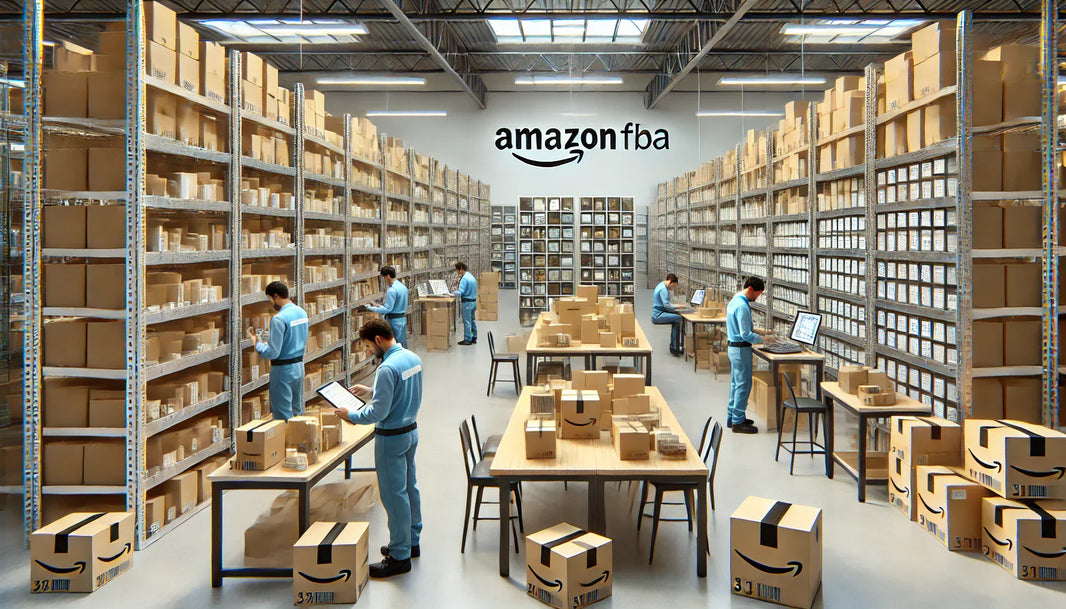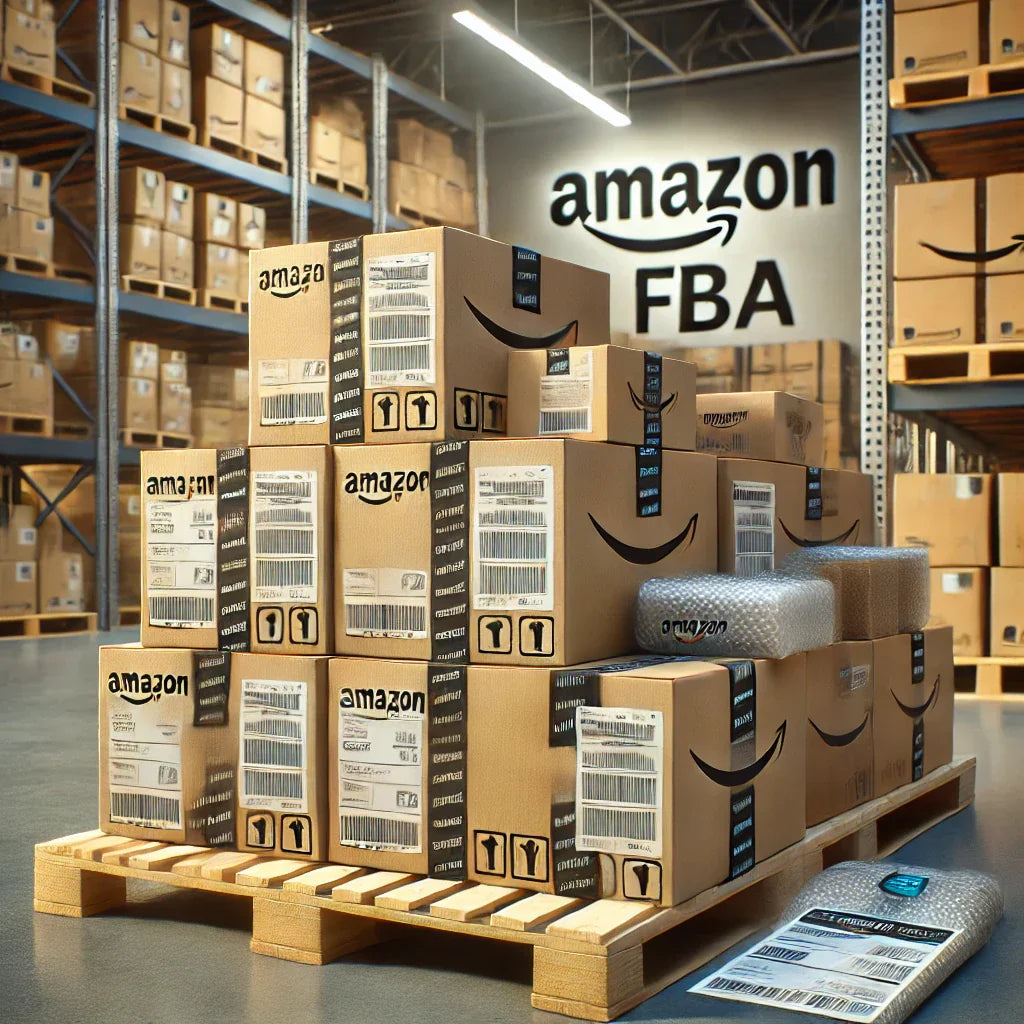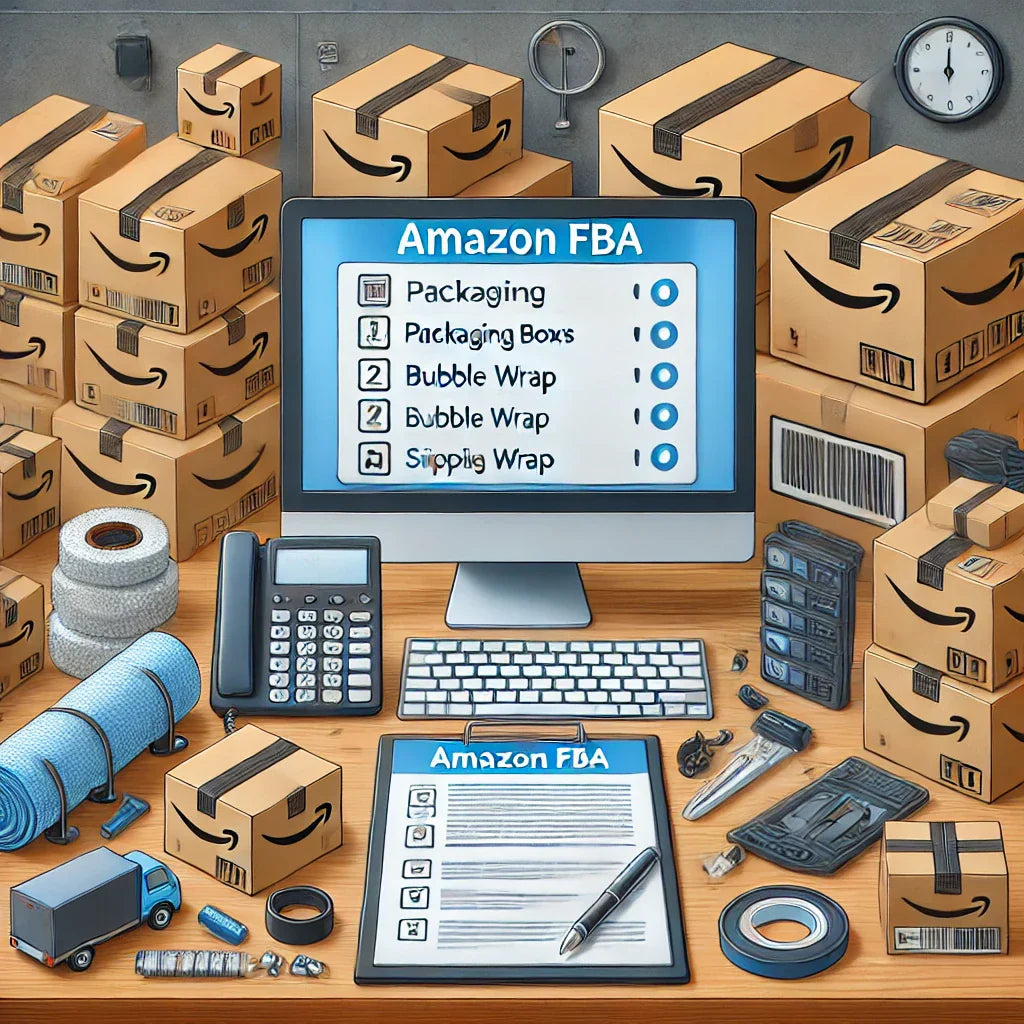When navigating the world of online shopping, returning items can often be a complex process. Amazon, as a leader in e-commerce, offers streamlined solutions, including the use of their return address for efficient and expedited refunds. Understanding how to utilize Amazon's return address not only ensures a smoother return experience but also helps in receiving your refunds faster. In this guide, we’ll walk you through the steps, tips, and insights for leveraging Amazon's return policies to your advantage.

Understanding Amazon's Return Policies
To start, it's crucial to understand Amazon’s comprehensive return policies. As a global e-commerce giant, Amazon has established return policies designed to provide flexibility and convenience to customers. These policies are generally consistent but may vary slightly based on item categories and seller agreements.
What Can Be Returned and When?
Amazon typically allows returns within 30 days of receipt. However, certain items have specific restrictions, such as:
- Electronics: Must be returned in the original packaging and condition.
- Groceries and Perishables: Some are eligible for refunds but not returns.
- Third-Party Sellers: Policies may differ, so reviewing each seller’s return terms is essential.
Using Amazon's official guidelines, you’ll notice that their process is efficient but demands accuracy from customers to ensure timely refunds. When initiating a return, the reasons you provide can influence whether you’ll incur additional fees or not.
Importance of Amazon’s Return Address
Amazon’s return address plays a pivotal role in the refund process. Knowing where to send your returns and understanding the logistics involved can accelerate the timeframe for receiving your money back. Incorrectly addressing your return or sending it to the wrong facility can lead to delays or, worse, a denial of the refund request.
Step-by-Step Guide to Using Amazon’s Return Address
Now that we understand the basics, let's dive into the practical steps involved in utilizing Amazon's return address correctly.
1. Initiating the Return Process Online
To begin a return, visit your Amazon account and go to the “Your Orders” section. Identify the item you wish to return and select the “Return or Replace Items” option. Here’s what to keep in mind:
- Choose the Right Reason: Amazon provides a drop-down list of common reasons for returns. Select the most accurate description to avoid processing issues.
- Prepare for Refund Types: Depending on the reason and the item, you may be offered a full refund, a replacement, or a partial refund.
Once completed, Amazon will send you a return label that includes the appropriate Amazon return address. Printing this label is crucial, as it ensures your item reaches the right location.
2. Packing Your Item Properly
Improper packaging is one of the most common reasons for return rejection. To ensure your item is accepted:
- Use the Original Packaging: Whenever possible, use the original box or container in which the item was received.
- Add Cushioning: For delicate items, extra padding is essential to prevent damage during transit.
- Attach the Return Label Clearly: Make sure the Amazon return address is visible and not obstructed. Use strong tape to secure the label.
Including a note or a copy of your return receipt within the package is a good practice, as it may help Amazon’s returns department process your refund faster.
3. Selecting the Right Shipping Method
Depending on your location, you may have multiple shipping options:
- Drop-Off Locations: Amazon collaborates with various drop-off points, such as UPS and Kohl’s stores, to simplify returns. Choosing a nearby drop-off location can save time.
- Carrier Pickup: In some areas, you may request a pickup for your return. Ensure the item is ready and packed properly when using this service.
Shipping the item promptly is critical to avoid missing the return window. Once your package reaches the designated Amazon return address, the company will evaluate its condition before approving your refund.
Tips for Speeding Up the Refund Process
A common frustration among shoppers is waiting for refunds. Here are strategies to help expedite the process:
1. Track Your Return Shipment
Once you’ve sent the package, keep an eye on the tracking information. This allows you to monitor its journey to the Amazon return address and can help you follow up if there are any delays. When Amazon receives the item, they typically update the return status within a few days.
2. Use Amazon Locker for Faster Processing
For eligible items, returning through Amazon Lockers can speed up processing. These self-service kiosks allow for a secure and quick return, often leading to faster refund approvals.
3. Communicate Clearly with Third-Party Sellers
If you’re returning an item purchased from a third-party seller, clear communication is key. Contact the seller for any specific instructions and ensure they acknowledge your return request. Sometimes, sellers offer a different return address from Amazon’s facilities, so double-check to avoid errors.
Common Pitfalls to Avoid
Even with the best intentions, mistakes can happen. Here are some common errors and how to sidestep them:
1. Incorrect Addressing
Double-check the Amazon return address on your label. Mislabeling or sending to the wrong location can delay or void your refund. If you’re uncertain, consult Amazon’s support for clarification.
2. Not Following Packaging Guidelines
Damaged or poorly packed items may not be eligible for refunds. Always adhere to Amazon’s packaging requirements, even if it feels tedious.
3. Missing the Return Deadline
Remember, most items must be returned within 30 days. Set reminders and act quickly to avoid missing the cutoff.
Understanding Refund Methods and Timelines
Amazon offers multiple refund methods, each with varying processing times. Let’s break down what to expect:
1. Refund Methods
- Original Payment Method: Refunds to credit or debit cards can take 3-5 business days.
- Amazon Gift Card Balance: These refunds are usually processed within a few hours.
- Bank Account Refunds: Direct deposit refunds may take longer, depending on your bank.
Choosing the appropriate refund method can impact how quickly you receive your money.
2. Expedited Refunds
Amazon Prime members may be eligible for faster refunds in some cases. If you need the refund urgently, consider reaching out to Amazon customer service for potential assistance.
Real-Life Examples of Successful Returns
To illustrate the process, consider these examples:
Example 1: Returning a Damaged Item
Emily ordered a set of dinner plates, but they arrived shattered. She initiated a return within hours and provided photos as evidence. By carefully following Amazon’s guidelines, her return was approved, and a replacement was sent before the original item even reached Amazon’s return address.
Example 2: Miscommunication with a Third-Party Seller
James bought a specialty gadget from a third-party seller. When it didn’t function as expected, he had to navigate through the seller’s custom return policy. Clear and persistent communication ensured that he received a refund after returning the item to the correct address.
![]()
Navigating Return Exceptions and Challenges
While Amazon’s return policy is relatively user-friendly, certain items and situations require extra attention. Understanding the nuances of these exceptions can help you prepare for any hurdles you might face during the return process.
1. Returning High-Value Items
High-value items, such as electronics or expensive fashion pieces, come with stricter return requirements. For instance, an unopened and undamaged item will likely be processed faster than one that shows signs of wear. Here’s how to handle these returns:
- Documentation: Always keep receipts, warranty cards, and any related documents. These might be requested during the return or refund process.
- Photographic Evidence: If your item arrives damaged or defective, take clear photos before initiating the return. These images may be needed to support your claim.
High-value items are often subject to additional verification once they reach the Amazon return address, which could delay the refund. Being meticulous with your documentation minimizes these delays.
2. Handling Returns for Gifts
Returning a gift purchased on Amazon involves a different approach. If you’ve received an item as a gift and want to return it, you’ll need to ensure the original order number is accessible. Here’s how:
- Gift Receipt: If the gift-giver included a gift receipt, use it to initiate the return. This way, you won’t need to involve the original purchaser.
- Amazon’s Gift Return Portal: You can also use the dedicated gift return portal, which guides you through the process step-by-step. Note that gift returns typically result in an Amazon Gift Card refund.
Handling gift returns properly ensures you don’t have to engage in uncomfortable conversations with the person who gifted the item, and you’ll still get a fair refund.
The Role of Customer Service in Returns
Amazon's customer service is an invaluable resource when dealing with complicated returns or addressing issues that arise. Let’s explore how and when to engage with their support team.
1. When to Contact Customer Support
Certain scenarios necessitate direct assistance from Amazon’s customer service, including:
- Shipping Errors: If Amazon sent the wrong item or an incomplete order, contact them immediately. They may offer a replacement or refund without requiring a return.
- Lost Returns: If you’ve tracked your return and noticed that it has not reached the Amazon return address within the expected time, customer service can help trace the package or provide updates.
- Refund Disputes: In cases where you believe you deserve a full refund but only received a partial one, customer service can review the details and potentially adjust the amount.
2. Tips for Effective Communication
Being concise and polite can make a significant difference when interacting with Amazon’s customer support:
- Have Your Information Ready: Provide your order number, tracking details, and photos of the item if applicable. Being prepared ensures a quicker resolution.
- Use Multiple Contact Methods: If a chat representative isn’t resolving your issue, consider calling or emailing Amazon. Different support channels may have varying levels of authority to assist.
Amazon prides itself on customer satisfaction, and while issues can be frustrating, the company generally strives to make things right when provided with the necessary information.
Advanced Strategies for Fast Refunds
Now that we’ve covered the basic return process, let’s dive into some advanced strategies that seasoned Amazon shoppers use to ensure the fastest possible refunds.
1. Using Amazon Hub Counters and Lockers
Amazon Hub Counters and Lockers are convenient return options that not only simplify the process but often speed up the refund timeline. Here’s why they’re effective:
- Immediate Scanning: When you drop your package off at an Amazon Locker or Hub Counter, it gets scanned immediately. This scan serves as a confirmation that the item is on its way back to the Amazon return address, triggering the refund process faster.
- Wider Availability: With Amazon’s network expanding, more locations are available for returns, making it easier to access these services.
Choosing a nearby Locker or Hub Counter for eligible items can shave days off your refund time compared to traditional return methods.
2. Taking Advantage of Prime Membership Perks
Amazon Prime members often benefit from expedited processing, not only for purchases but also for returns. Here’s how to maximize these perks:
- Exclusive Drop-Off Locations: Prime members may have access to additional drop-off points, such as Whole Foods or specialized delivery stations.
- Early Refund Processing: In some cases, Amazon will issue a refund as soon as the return label is scanned, even before the item arrives at the Amazon return address. This perk is often exclusive to Prime members.
Upgrading to Prime can be a cost-effective solution if you frequently shop and return items, saving you time and providing added convenience.
How Amazon Evaluates Returns
Ever wondered what happens once your package arrives at the Amazon return address? Understanding the evaluation process sheds light on why some refunds are faster than others.
1. The Inspection Process
Each returned item undergoes a thorough inspection to ensure it meets Amazon’s return criteria. Here are some key steps involved:
- Condition Assessment: Amazon staff or automated systems check the item’s condition, including whether it shows signs of use or damage not mentioned in the return request.
- Barcode and Label Matching: The return label and barcode are scanned to ensure they match the item’s original purchase record. Any discrepancies can delay your refund.
Knowing that Amazon employs both automated and manual inspection methods helps explain occasional delays or inconsistencies in refund processing.
2. Common Reasons for Return Rejection
Even when customers believe they’ve followed all guidelines, some returns are rejected. Common reasons include:
- Signs of Wear or Tampering: If an item shows obvious signs of wear or tampering that wasn’t disclosed, Amazon may deny the return.
- Missing Accessories: Electronics and other items with accessories must be returned in full. Missing components, such as power cords or instruction manuals, could result in partial refunds or rejections.
Exploring Refund Types in Detail
Amazon offers various refund methods, each suited to different customer needs. Choosing the right one for your situation can impact how soon you receive your funds.
1. Amazon Gift Card Refunds
Opting for an Amazon Gift Card refund is one of the quickest ways to get reimbursed. Here’s why:
- Instant Credit: In many cases, the refund is issued within hours of your return being scanned. This option is ideal for frequent Amazon shoppers who don’t mind using their refunds for future purchases.
- Easy Application: Gift card balances are automatically applied to your next order, streamlining future transactions.
However, remember that gift card refunds are non-transferable and cannot be withdrawn as cash, so consider whether this method aligns with your needs.
2. Credit Card and Debit Card Refunds
For those who prefer getting refunds back to their bank accounts, processing times can vary:
- Standard Timelines: Refunds to credit or debit cards usually take 3-5 business days but may be delayed depending on your bank.
- Possible Delays: During peak shopping seasons, such as holidays, bank processing times may extend. Keep this in mind if you’re counting on a refund within a tight timeframe.
If you experience significant delays, contact both Amazon and your financial institution for an update.
Managing Return Disputes
Sometimes, even when everything is done correctly, you may find yourself in a return dispute. Here’s how to handle these challenging situations effectively.
1. Filing a Return Appeal
If your return is denied or you receive a partial refund, Amazon allows you to file an appeal. Here’s how:
- Review Return Policies: Before appealing, double-check Amazon’s return policies to ensure your claim is valid.
- Submit Supporting Evidence: Include photos, receipts, and any other relevant documentation to strengthen your case.
An appeal can take several days to process, so be patient and persistent. If your case is strong, Amazon is generally fair in resolving disputes.
2. Escalating the Issue
If your appeal is unsuccessful, you have the option to escalate the matter further:
- Contact an Amazon Manager: Politely request to speak with a manager or supervisor if initial customer service responses don’t resolve your issue.
- Leave a Detailed Review: Sometimes, leaving a factual and calm review of your experience can prompt a quicker resolution. Companies often monitor feedback closely.
Understanding when to escalate and how to do so professionally increases your chances of a successful outcome.
Insights on Amazon’s Return Trends and Data
Amazon processes millions of returns each year, and examining these trends offers a fascinating glimpse into consumer behavior and the company’s operations.
1. Return Rates for Different Product Categories
Return rates can vary significantly by product category:
- Apparel: Clothing and accessories have some of the highest return rates due to issues with fit or style.
- Electronics: These items are often returned due to functionality issues or dissatisfaction with performance.
- Books and Media: Return rates for books and media are relatively low but can spike after a major release if customers are dissatisfied with content.
Understanding these trends helps explain why Amazon continually refines its return policies to address specific challenges.
2. Environmental Impact of Returns
With e-commerce returns on the rise, there’s increasing scrutiny on the environmental impact of shipping items back and forth. Amazon has taken steps to minimize this, such as:
- Sustainable Packaging: Efforts to use recyclable materials and reduce waste in return packaging.
- Consolidated Shipping: Encouraging customers to return multiple items in a single shipment to lower carbon emissions.
By being mindful of how and when you return items, you can contribute to more sustainable shopping practices.

Exploring the Impact of Amazon’s Return Address on Logistics
Amazon’s efficiency in handling returns is largely supported by its sophisticated logistics infrastructure, including strategically placed return addresses and warehouses. Let’s take a closer look at how these logistics impact the return experience.
1. Strategic Placement of Return Centers
Amazon’s return centers are strategically located to minimize the distance between customers and processing facilities. This strategic placement has multiple benefits:
- Faster Turnaround: Items that are returned to nearby facilities are processed quicker, reducing wait times for refunds.
- Reduced Shipping Costs: By having return centers distributed across various regions, Amazon saves on shipping expenses and can pass on savings to customers.
- Enhanced Efficiency: Each return center is equipped to handle specific types of items, such as electronics or apparel, which streamlines the sorting and inspection process.
Understanding the role of Amazon's return address in its logistics chain reveals the extent of the company’s planning and optimization efforts, all designed to improve customer satisfaction.
2. Challenges in Return Logistics
Despite the efficiency, Amazon faces logistical challenges, especially during peak shopping periods like Black Friday or the holiday season:
- High Volume of Returns: The surge in orders during these times often leads to an equally large volume of returns, which can strain resources and delay processing.
- Cross-Border Returns: For international orders, cross-border returns are more complicated, involving customs declarations and additional shipping fees.
These logistical hurdles highlight the importance of planning your returns in advance, particularly if they coincide with busy shopping seasons.
How to Make the Most of Amazon’s Return Policies
To maximize the benefits of Amazon’s return policies, shoppers can adopt certain habits and strategies. From knowing which items to purchase carefully to understanding exceptions, here are ways to optimize your shopping and return experiences.
1. Be a Mindful Shopper
Being selective about your purchases can save you the hassle of returns. Consider these best practices:
- Read Product Reviews: Customer reviews can provide insight into the quality and fit of items, especially for apparel or electronics. Use these reviews to make informed decisions and reduce the likelihood of needing to return products.
- Check Seller Ratings: For third-party sellers, ratings and feedback are crucial indicators of reliability. A high rating typically suggests better quality and service.
Mindful shopping not only minimizes returns but also enhances your overall Amazon experience.
2. Make Use of Amazon Try Before You Buy
For clothing and shoes, Amazon’s “Try Before You Buy” service allows you to try items at home before committing to a purchase. Here’s how it works:
- Flexible Returns: You only pay for the items you keep, and you can return the rest without incurring additional costs.
- Convenience and Assurance: This service is perfect for those uncertain about sizing or style, as it provides a risk-free way to shop.
Using this feature wisely can save you time and effort, particularly if you frequently shop for fashion items on Amazon.
The Economics of Amazon’s Return System
Amazon’s return policies not only benefit consumers but also impact the company’s financial performance. Understanding the economics behind these policies gives us a clearer picture of why Amazon invests so heavily in returns infrastructure.
1. Cost Implications for Amazon
Every return comes at a cost to Amazon, including:
- Shipping and Handling: Each returned item must be shipped back to a facility, which incurs shipping costs, even if partially absorbed by the customer.
- Inspection and Restocking: Items must be inspected for quality and restocked or sent for refurbishment. This process requires labor and resources.
- Potential Losses: Some items, particularly those that are damaged or no longer sellable, become losses for the company. These products are either donated, recycled, or sold to liquidators at a lower price.
Despite these costs, Amazon continues to offer flexible return policies to maintain customer loyalty and competitiveness in the e-commerce market.
2. The Role of Machine Learning in Managing Returns
Amazon uses advanced algorithms and machine learning to optimize its returns process. These technologies help in:
- Predicting Return Rates: By analyzing historical data, Amazon can predict which items are more likely to be returned and adjust inventory or marketing strategies accordingly.
- Automating Inspections: AI-powered tools can automate the initial inspection of returned items, speeding up processing times and reducing human error.
- Fraud Prevention: Machine learning algorithms also detect and flag suspicious return patterns, helping prevent fraud and abuse of the return policy.
These technological advancements ensure that Amazon remains at the forefront of e-commerce innovation while keeping costs manageable.
Comparing Amazon’s Return Policies to Competitors
While Amazon is a leader in e-commerce returns, it’s helpful to compare its policies with those of other major retailers. Understanding these differences can highlight Amazon’s strengths and potential areas for improvement.
1. Amazon vs. Walmart
Walmart, another retail giant, also offers a robust return policy, but there are some key differences:
- Return Window: Walmart typically has a similar 30-day return policy, but certain items have longer return windows. For instance, electronics may have a 15-day period compared to Amazon’s 30-day standard.
- In-Store Returns: Walmart allows for easy in-store returns, which can be more convenient for some customers. Amazon, on the other hand, has partnerships with places like Kohl’s and Whole Foods for returns but does not have dedicated physical stores for processing.
2. Amazon vs. Target
Target offers a more lenient return policy in some cases, especially for Target RedCard holders who get an additional 30 days to return items. Here are some comparisons:
- Extended Returns: Target’s return window for certain brands extends to up to 90 days. Amazon, while flexible, doesn’t typically offer such extended periods unless specified.
- Ease of Return: Both companies provide easy-to-use return portals, but Target’s ability to process returns directly in-store provides an added level of convenience.
These comparisons illustrate that while Amazon’s return system is highly efficient and convenient, other retailers offer certain advantages that shoppers may want to consider.
Environmental Considerations of Amazon Returns
The environmental impact of returns is becoming a more pressing issue as e-commerce continues to grow. Here’s a deeper look into how returns contribute to waste and what Amazon is doing to mitigate these effects.
1. The Carbon Footprint of Returns
Shipping returns back to the Amazon return address contributes to carbon emissions. Factors that increase this carbon footprint include:
- Transportation: Each returned item requires transportation, often involving long-distance shipping and fuel consumption.
- Packaging Waste: Returned items are frequently repackaged, adding to the overall waste generated by the e-commerce industry.
These environmental concerns have prompted Amazon and other retailers to explore more sustainable practices.
2. Amazon’s Efforts Towards Sustainability
Amazon has introduced several initiatives aimed at reducing the environmental impact of returns:
- Compact by Design: This program highlights products with more efficient packaging, reducing excess air and materials.
- Frustration-Free Packaging: Amazon works with manufacturers to create packaging that is easier to open and recyclable, which helps minimize waste.
Consumers can also do their part by consolidating returns and choosing sustainable shipping options whenever available.
Real-Life Scenarios and Case Studies
To provide a more practical understanding of the return process, let’s examine some real-life scenarios and lessons learned from shoppers who have navigated Amazon’s return system.
1. Case Study: Returning a Large Appliance
Sarah purchased a high-end air purifier from Amazon. Unfortunately, the appliance was defective upon arrival. Here’s how she managed the return:
- Initiating the Return: Sarah quickly documented the defect with photos and contacted Amazon support. Given the item’s size, she had to schedule a special pickup.
- Resolution: Amazon arranged for a carrier to collect the appliance and issued a refund as soon as it was scanned by the carrier. Sarah learned the importance of documenting defects and initiating returns immediately.
This scenario highlights the extra steps involved in returning large or heavy items and the importance of prompt communication with Amazon.
2. Scenario: A Denied Return Appeal
John attempted to return a smartwatch he purchased but had worn extensively. Despite his claim that the watch was defective, Amazon’s inspection revealed signs of heavy wear, and his refund was denied. Here’s what John learned:
- Lessons Learned: Returning items in like-new condition is crucial, especially for high-value products. Additionally, being honest about wear and usage can save time and disappointment.
- Appeal Process: John attempted to appeal the decision but lacked sufficient evidence to support his claim, resulting in a permanent denial.
This case underscores the importance of adhering to Amazon’s return guidelines and understanding that appeals must be well-documented.
![]()
The Role of Third-Party Sellers in Amazon Returns
Amazon’s marketplace features not only items sold directly by Amazon but also a vast number of products from third-party sellers. This introduces another layer of complexity when it comes to returns.
1. Understanding Third-Party Seller Policies
Third-party sellers on Amazon have the flexibility to set their own return policies, which may differ significantly from Amazon’s standard return terms. Here are some key considerations:
- Policy Variability: Some third-party sellers offer more generous return windows, while others have stricter rules. Always review the seller’s return policy before making a purchase.
- Return Addresses: Items sold by third-party sellers may need to be returned to a different address, not an Amazon return center. This can add complexity, especially if the seller is located in another country.
Before making a purchase from a third-party seller, familiarize yourself with the seller’s ratings and return conditions to avoid unexpected complications.
2. How to Initiate a Return with Third-Party Sellers
The process of initiating a return with a third-party seller involves a few extra steps:
- Contact the Seller: Start by messaging the seller through Amazon’s platform. Clearly explain the issue and include any relevant details, such as order numbers and photos of the item.
- Wait for Approval: The seller will review your request and may either approve the return or offer a solution, like a partial refund or replacement.
- Use the Provided Return Instructions: If the seller approves your return, they’ll provide specific instructions, which may include a unique return address. Follow these directions carefully to ensure your return is processed smoothly.
Working with third-party sellers requires more proactive communication and patience, but it can be successful if you follow their guidelines carefully.
3. Handling Disputes with Third-Party Sellers
Occasionally, you may encounter disputes or uncooperative sellers. Here’s how to handle these situations:
- Amazon’s A-to-Z Guarantee: If a third-party seller refuses to accept a valid return or issue a refund, you can file a claim under Amazon’s A-to-Z Guarantee. This protection covers purchases from sellers who fail to meet Amazon’s return and refund standards.
- Providing Evidence: To strengthen your claim, provide Amazon with as much evidence as possible, including your communication with the seller, photos of the item, and any additional proof of the issue.
The A-to-Z Guarantee serves as a safety net for customers, ensuring that even when issues arise with third-party sellers, you have a way to seek resolution.
How to Optimize the Return Experience for Special Circumstances
Certain circumstances, such as bulk returns or international orders, require extra care. Let’s explore strategies for navigating these complex situations.
1. Managing Bulk Returns
If you’re returning multiple items simultaneously, the logistics can become more complicated. Here’s how to handle bulk returns efficiently:
- Consolidate Returns When Possible: If items are eligible to be returned together, package them in a single box. This can reduce shipping costs and simplify tracking.
- Label Items Clearly: For bulk returns, ensure each item is labeled appropriately within the package. This helps Amazon’s processing team identify and categorize each return quickly.
- Use a Detailed Checklist: Keep a checklist of the items you’re returning to ensure nothing is missed. Document each return by taking photos and noting the return authorization number for future reference.
Bulk returns are often used by small business owners or frequent shoppers, and staying organized can significantly improve the experience.
2. Returning Items Internationally
International returns can be more challenging due to customs regulations and higher shipping fees. Here’s how to navigate these complexities:
- Check for International Return Policies: Some items purchased internationally may have stricter or non-returnable conditions. Be sure to verify this before initiating a return.
- Prepare for Customs Declarations: When returning an item across borders, you’ll need to fill out customs forms detailing the contents of the package. Failing to do this correctly can result in delays or additional fees.
- Consider Return Shipping Costs: International return shipping can be expensive, so calculate whether the cost is worth it before sending back an item. In some cases, Amazon may cover the cost if the return is due to an error on their part.
Understanding the intricacies of international returns helps avoid unnecessary expenses and ensures a smoother process.
Insider Tips from Frequent Amazon Shoppers
To get the most out of Amazon’s return system, consider the following tips from seasoned shoppers who have mastered the art of hassle-free returns.
1. Always Keep Original Packaging
Frequent shoppers know that keeping original packaging can be a lifesaver. Here’s why:
- Return Eligibility: Some items, particularly electronics and high-value products, require original packaging for a return to be accepted.
- Resale and Reshipping: If you decide not to return an item but wish to resell it, original packaging increases its resale value.
Storing packaging in a designated space can save you time and effort when the need for a return arises.
2. Take Advantage of Amazon’s Returnless Refunds
Amazon offers a returnless refund option for certain items, meaning you receive a refund without needing to send the item back. This policy is typically applied to lower-cost or high-shipping-cost items. Here’s how to identify and utilize it:
- Eligible Items: Not all products qualify, but you’ll be notified during the return process if returnless refunding is available.
- When It Makes Sense: Returnless refunds are particularly useful when dealing with items that are difficult to ship or if the item has little resale value.
Keep in mind that this policy is at Amazon’s discretion, and customers cannot request it directly.
The Psychological Aspects of Online Returns
The psychology behind consumer returns is a fascinating topic, shedding light on why we sometimes return items and how the process impacts shopping behavior.
1. Buyer’s Remorse and Impulse Purchases
A significant number of returns are driven by buyer’s remorse, especially after making impulse purchases. Here’s why this happens:
- The Excitement of Shopping: The anticipation and thrill of buying something new often lead to impulsive decisions, which may be regretted once the item arrives.
- Unrealistic Expectations: Online product descriptions and images can sometimes set unrealistic expectations. When the item doesn’t live up to the customer’s imagination, a return becomes inevitable.
Understanding your own shopping triggers can help reduce unnecessary returns and improve the overall online shopping experience.
2. The Satisfaction of Hassle-Free Returns
On the flip side, the ease of Amazon’s return process can be a double-edged sword. While it’s convenient for genuine issues, it also encourages over-purchasing with the knowledge that returns are simple. This phenomenon is known as “return addiction”:
- Return Addiction: Some consumers become accustomed to buying more than they need, with the intention of returning unwanted items. While this strategy can be effective for indecisive shoppers, it can also lead to waste and contribute to environmental impact.
Reflecting on your shopping habits and making conscious choices can lead to a more sustainable and satisfying experience.
Future Trends in E-Commerce Returns
As the e-commerce landscape evolves, so do return policies and technologies. Here’s a glimpse into the future of online returns and what shoppers can expect.
1. AI and Predictive Returns
Artificial Intelligence (AI) is set to revolutionize the way returns are managed:
- Predictive Analytics: By analyzing purchase patterns and return behaviors, AI can predict which items are likely to be returned before the transaction even occurs. This could allow companies to adjust their marketing or inventory strategies accordingly.
- Automated Return Approvals: AI will continue to streamline the return approval process, making decisions based on data-driven insights. This means faster processing for customers and more efficient operations for companies.
AI-powered returns will improve efficiency and reduce costs, but they may also raise privacy concerns among consumers.
2. The Rise of Virtual and Augmented Reality
Virtual and Augmented Reality (VR/AR) technologies are poised to reduce the need for returns by giving shoppers a more accurate sense of what they’re buying:
- Virtual Try-Ons: Fashion retailers are already using AR to let customers try on clothes virtually. This technology could significantly lower return rates for apparel.
- 3D Product Previews: For items like furniture or home decor, 3D previews allow customers to see how products would look in their space, reducing the likelihood of dissatisfaction.
These advancements are expected to reshape the e-commerce industry, making shopping more immersive and returns less frequent.

Final Thoughts on Amazon's Return Address and Efficient Refunds
Mastering the return process on Amazon is all about precision and promptness. Understanding Amazon’s return address system and adhering to their guidelines will make your experience smoother and faster. From initiating the return online to tracking your shipment, every step matters.
Remember, while Amazon aims to make returns simple, your diligence ensures an optimal outcome. Always keep track of deadlines, use secure packaging, and don’t hesitate to seek assistance if issues arise. Following these best practices will help you navigate returns like a pro and maximize your chances of fast refunds.
Read More
- How to Find Amazon's Corporate Address and Contact Information
- Understanding Amazon Fulfillment Centers: Locations and Addresses
- Everything You Need to Know About Amazon’s Registered Address
- Changing Your Shipping Address on Amazon: Step-by-Step Guide
- Where to Send Amazon Returns: Address Tips and Best Practices
- How to Update Your Amazon Account Billing and Shipping Address







